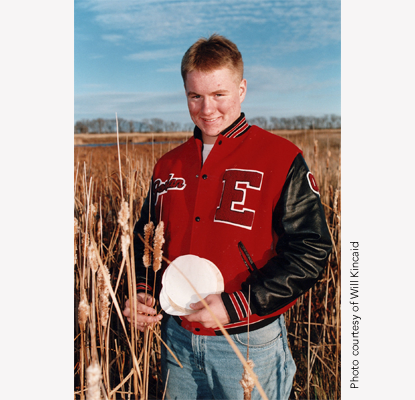Jordan Sand
Referred to as a "teenaged Rumplestiltskin," Jordan Sand may not weave straw into gold, but this Ellendale, ND student has invented something that has equal potential for the farming community. Sand, winner of the 2001 Lemelson-MIT High School Invention Apprenticeship, has found a way to turn non-income producing raw materials into a valuable resource: paper.
One of Sand's first inventions is a solar distillation device to purify outdoor water.
After reading about a company that made cardboard out of barley in Prarie Grains Magazine, Sand invented a process using local crops—grain straws such as wheat, corn, flax and cattails—to make paper. Using these raw materials, which are annual plants that need no re-seeding, herbicides or pesticides, would provide additional income to farmers from crops that would not ordinarily be income-producing.
Since his town lacked necessary resources, Sand contacted a wood and paper sciences professor at the University of Minnesota, St. Paul to test his theory. He drove six hours to the university, and spent several days in the laboratory pulping, bleaching and, finally, producing paper from grain straw. Although wood paper is more durable, Sand's paper, which resembles flat coffee filters, is ideal for short-term use, such as magazines or newspapers.
"I'm not a huge environmentalist, but if this is a huge renewable resource that we aren't using to its fullest extent, I figured there is something worth looking at here," explained Sand.
The program's judges praised Sand for his ability to create an innovative solution that has both environmental and economic benefits to the community. To foster Sand's interest in environmental-friendly inventions, he was paired with Dr. Ashok Gadgil as his "Invention Mentor." Dr. Gadgil conducts research on drinking water disinfection, indoor air pollutants and energy efficiency at the Lawrence Berkeley National Laboratory at the University of California.
During his three-week stay at the lab, Sand gained hands-on experience working on a variety of projects, such as the study of room gasses in industrial spaces. Using lasers to detect toxins and airflow, he helped create mathematical models and provide analysis. Regarding his apprenticeship Sand says, "It gave me confidence and a new avenue for opportunity."


